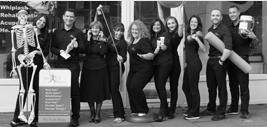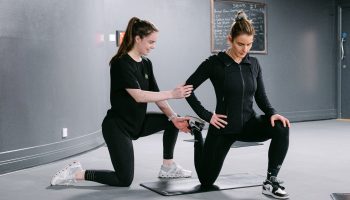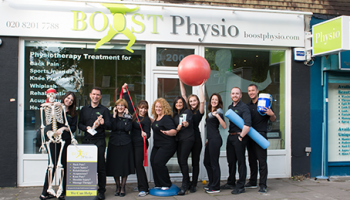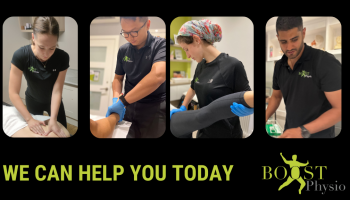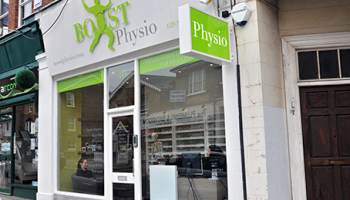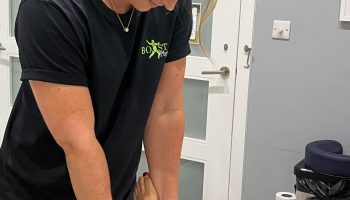Shoulder Injury? Could it be the rotator cuff?

This is an image of the front of the right shoulder showing examples of some tears to the rotator cuff of the shoulder
written by Jolene Sher, Senior Physio
What is the Rotator Cuff?
- The shoulder joint is a ball and socket joint, formed by the ball-shaped end of the upper arm (the humerus) and a shallow socket on the edge of the shoulder blade (scapula). This allows for a large range of movement in many directions. Stability within the joint is provided by the muscles, with some support from the ligaments. The main muscles that give this stability are the Rotator Cuff muscles.
- The rotator cuff is made up of a group of four muscles (called the subscapularis, supraspinatus, infraspinatus and teres minor) and their tendons. The tendons wrap around the shoulder, forming a cuff around the ball of the humerus providing the stability during movement of the arm.
- On top of the shoulder joint is a bone called the acromion. In the gap between the shoulder joint and the acromion is a space that some of the rotator cuff tendons run through.
Types of rotator cuff injury
Rotator cuff injury is a general term to describe inflammation or damage to one or more of the muscles or tendons that make up the rotator cuff.
Rotator cuff tendonitis
- The tendons of your rotator cuff can become inflamed. It most often affects the tendons which run underneath the acromion. When a tendon becomes trapped or squeezed, it’s known as impingement syndrome. Pain usually comes on gradually.
- This is when the muscles or tendons that make up your rotator cuff become completely or partially torn. It may be a result of a trauma, such as a fall, or due to tiny tears to the tendon through use and wear over time. Pain usually comes on suddenly.
Rotator cuff tear
How does it start and who is affected
Rotator cuff injuries may occur due to one or more of the following:
- Poor movements (e.g. repetitive or overhead activities) or poor posture around the shoulder are usually factors that can cause adverse strains and stresses in the rotator cuff.
- Lifting or pulling an object that is too heavy for you or lifting it in the wrong way.
- Landing on an outstretched hand to break a fall. Rotator cuff injuries often occur if you dislocate your shoulder.
- Wear with age.
- Muscle imbalance (When some of the muscles in your rotator cuff are stronger than others).
- Musculoskeletal disease (e.g. rheumatoid arthritis)
Shoulder pain affects around one in five people in the UK and rotator cuff injury is the most common cause.
Symptoms
Symptoms of a rotator cuff injury may include:
- Pain and tenderness over your shoulder (it may radiate down the arm) especially when you raise your arm out to the side, reach behind you or lift or pull a heavy weight
- Pain at night, particularly when you sleep on the affected side
- A feeling of weakness in your shoulder
- A limited range of movement in your shoulder
- Clinical findings from the Doctor or Physiotherapist. This includes special tests to pick up signs of shoulder impingment.
- Medical treatment: Commonly used interventions are advice (e.g. rest and ice), medication (e.g. anti-inflammatories or analgesics), corticosteroid injections and/or referral for physical therapy.
Diagnosis
- MRI
- Ultrasound scan
- X-rays cannot diagnose rotator cuff injuries.
Treatment
Conservative Treatment (Non-surgical treatments)
Physiotherapy Treatment
- Appropriate initial assessment- NB history and observation.
- Initial treatment is to help alleviate pain and inflammation. This can be achieved with ice, rest, soft tissue release and the use of electrotherapy modalities.
- Identifying predisposing factors such as posture or ergonomics (work/sport positions) and pre-injury level of function.
- Appropriate referral to a specialist if need be.
- Rehabilitation to return to work/sport:
ü Stabilisation – to ensure that the shoulder joint can remain stable under increased tension.
ü Strength – to make the shoulder strong in all movements (using gym based exercises)
ü Function – enhancing the shoulder’s ability to cope with the demands needed to get back to pre injury level
Surgical treatments
If unable to treat it conservatively surgery may be indicated, for example to repair a tear in your rotator cuff or to remove calcium deposits.
Prevention
To prevent rotator cuff injuries, make sure you:
- have the correct technique when playing sports or doing activities that use your shoulder, particularly overhead motions
- do exercises and stretches to keep your rotator cuff muscles strong and supple


Mon-Thurs 8am-9pm
Fri 8am-3pm
Sat/Sun 9am-6pm
BOOST PHYSIO works with major insurance companies like: BUPA, AVIVA, WPA, AXA. We usually deal directly with your insurance company.



